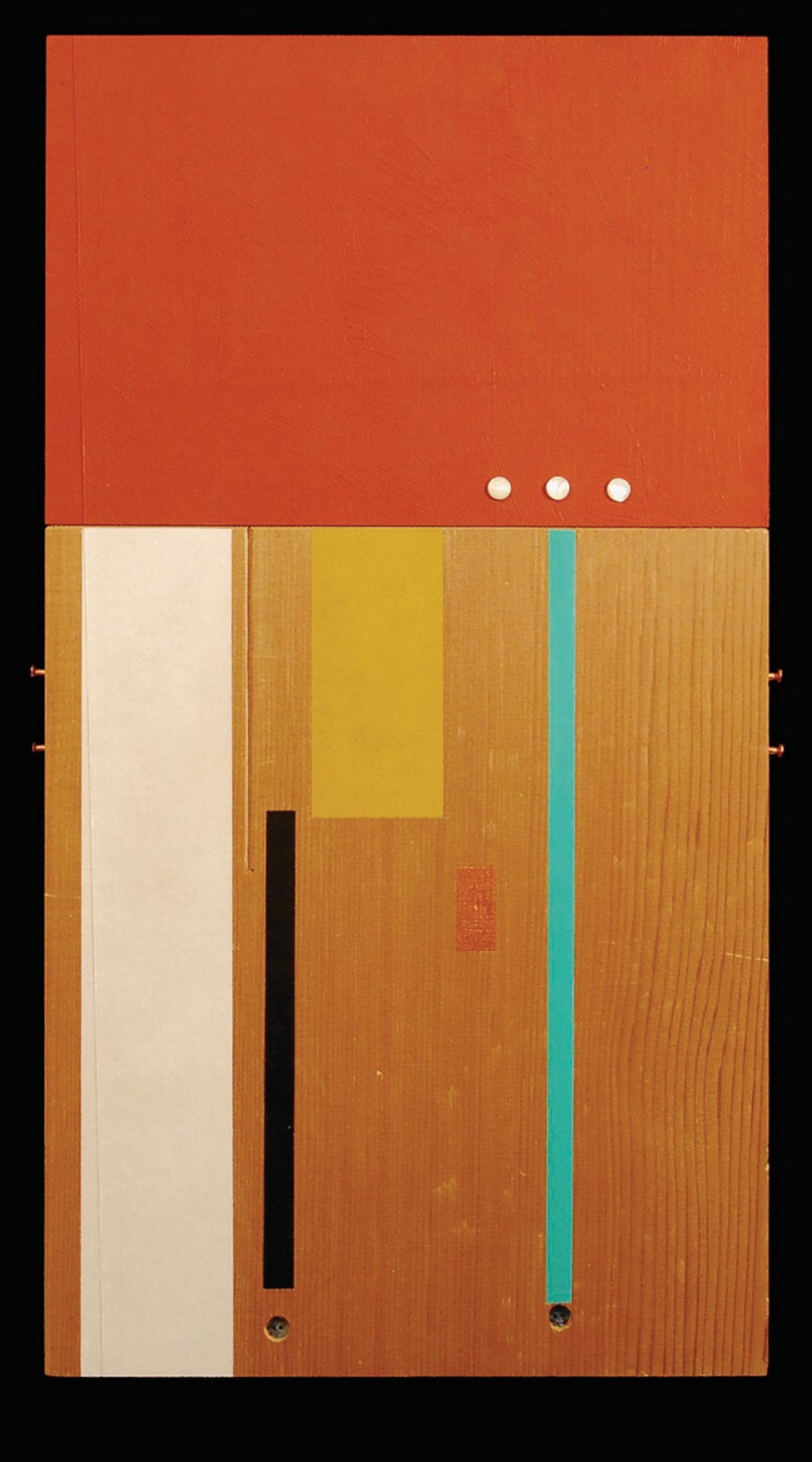I hope Chris Paul will forgive me. The worthy young Salish artist is part of a two-person show with his friend and mentor Mark Preston, a Tlingit artist from Whitehorse, Yukon. I spent an hour with Preston before the opening of their show, and I’ll devote this column to him.
Preston is a compact man, natty in a black suit and dark glasses. Instantly, he engaged me with his articulate intelligence and generosity of spirit. This show is the first flower of a radical development in his own art and the Tlingit traditions he has inherited. He calls it minimalist, and it is probing and relentlessly contemporary.
The painted and carved panels, and silver jewelry with diamonds and shell buttons, have grown from Preston’s 30 years of practice in the tradition. He grew up “on the land,” as a little boy accompanying his great-uncle on the trap line. Later he studied at the K’san school near Hazelton, and for the past 30 years, he has made his living carving bowls and masks and creating silver jewelry. As he says, you have to master the craft before you can break the rules.
For years, he has been imagining that break. While traditional native arts involve the decoration of functional objects — spoons, bowls, paddles — these have now become independent art objects, hanging on walls or standing on pedestals. And while Preston constantly acknowledges the value of his heritage, he knows that we live in a modern culture. “Our culture has always changed and adapted,” he noted. “It’s all contemporary art.” He now lives in a world of air travel and online banking.
So he has reduced his expressions to the elemental. We began with his cedar panels; rough at the edge, each has a painted top quarter and bare smooth face below. This repeated essential form refers to the button blankets that bear his people’s crests. Sometimes three buttons are inlaid along the top, a reference. The panels are carved, but in the most minimal way — a little sliver like a fingernail, or three grooves joining to make a T. Precise and perfectly positioned, these elements to refer to the past, but eschew storytelling. Painted shapes, like free-floating bits of a Mondrian canvas, animate the beautifully proportioned panels and, for those with eyes to see, their colours — copper, red, black, verdigris green, and yellow from the Chilkat blankets — “sustain the connection of the past into the future” he noted.
Next, a square white panel hangs on the wall, its paper “skin” cut through with a simple ovoid form and three T shapes. The gallery’s spotlights cast shadows on the wall behind the drum, each shadow multiplying the others. My imagination generates ideas — these are mountain ridges, the fins of a school of whales — and Preston smiles. If he went further with the image or titled the piece, he says, that free play of images would be confined. This, by the way, is a drum.
His new screen-print appears to be a city at night — stars overhead, taillight trails and high-rise buildings. On the left edge, a shadowy panel of Tlingit motif makes the connection between past and future. Closer examination shows that the lights in those “apartments” can also read as buttons on the blankets or beadwork. Yet it’s like the view coming into any urban airport, appropriate for this artist who regularly leaves Whitehorse to sell his work at galleries in Vancouver, Whistler, Switzerland and Germany. In recognition of the encouragement always offered by Elaine Monds of Alcheringa, his most searching experiments are being seen for the first time here in Victoria.
Previously, Preston was recognized here for his more traditional silver work. Now his wooden panels — inspired by the paintings of Mark Rothko, and ready to evolve on a monumental scale — translate beautifully as simple silver forms. Some are chased, as if they had been adzed by elves, and are inset with a row of sparkling diamonds in reference to the blanket buttons. His rings may be set with tiny abalone shell buttons.
With each piece, Preston continues his journey into the unknown. Building on his mastery of craft, he turns the slightest expression to profound effect. Amazingly, he seems to have captured the simple rectangular vertical form for his signature motif. And, somehow, the more simple his means of expression — white on white paint, a trace of carving, a small rectangle stacked on a larger one — the more profound his statements become.
Our Blankets, Our Stories: Mark Preston and Chris Paul, Alcheringa Gallery, 665 Fort St., 250-383-8224, until Sept. 14. alcheringa-gallery.com.
